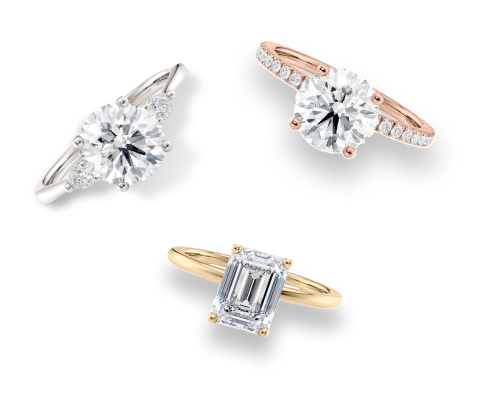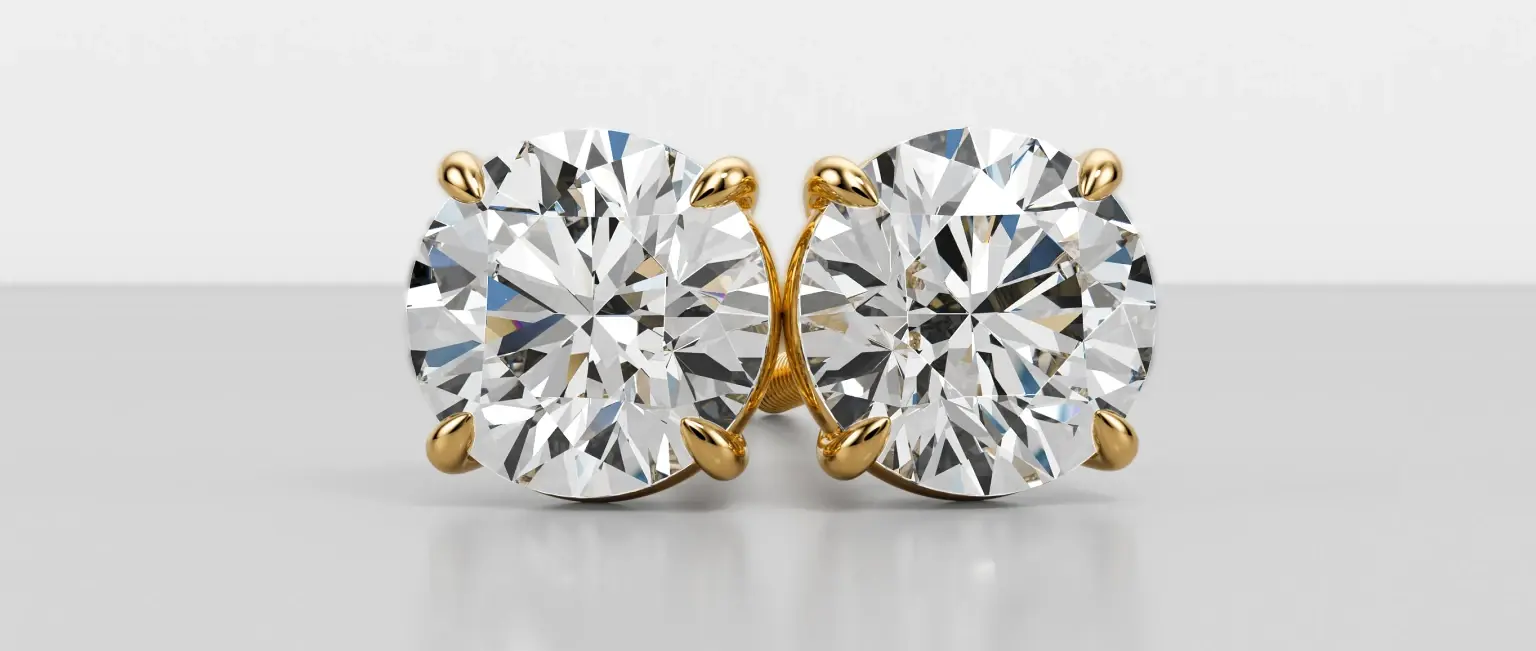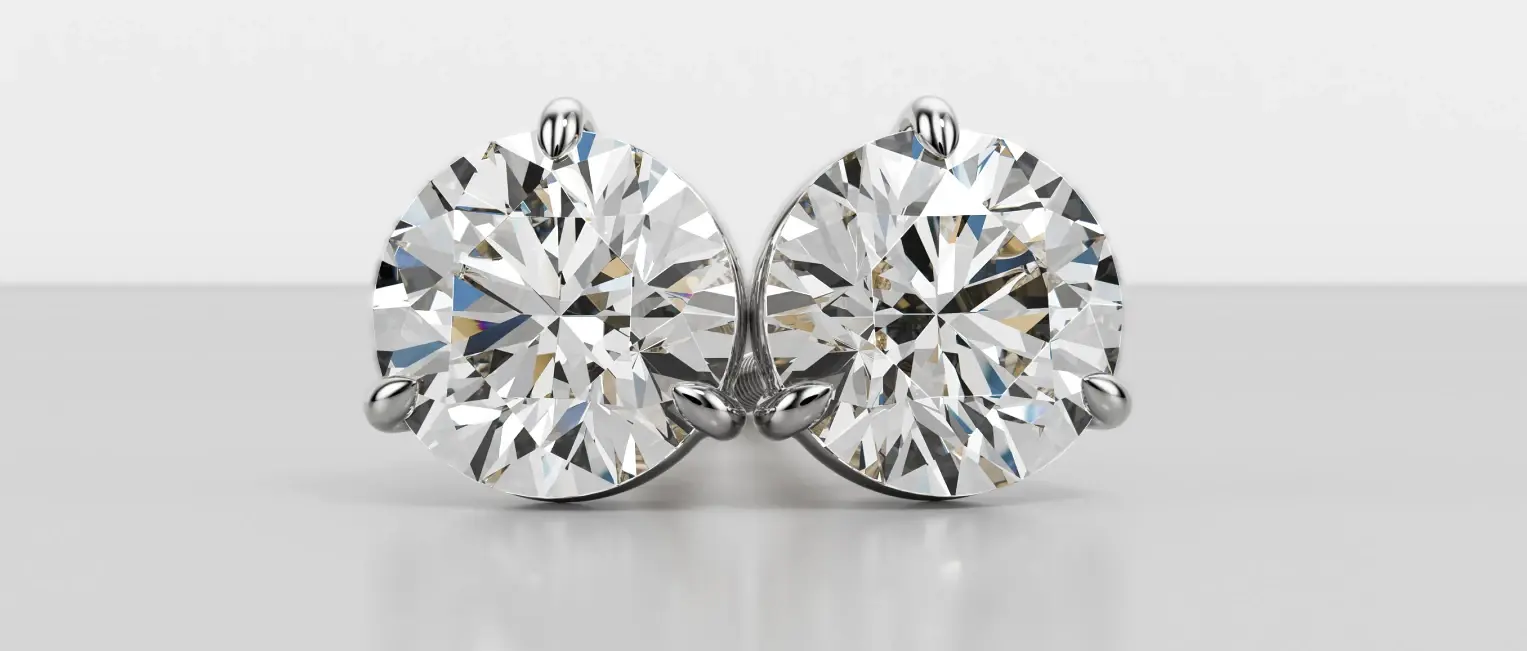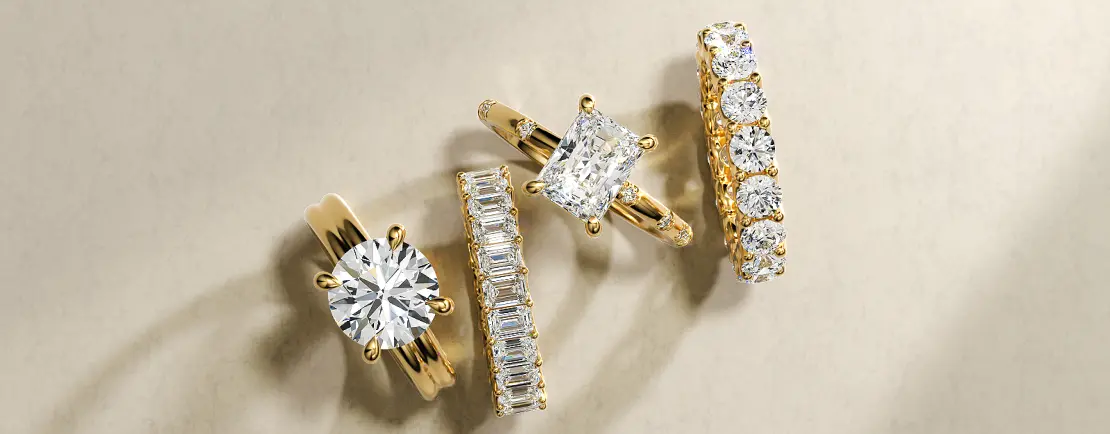The Difference Between
White Gold, Yellow Gold, and Rose Gold Engagement Rings
Aug 03, 2023
When it comes to engagement rings, many people focus on the stone. While there’s no denying that the diamond (or other gemstone) is the central feature of most engagement rings, other factors hold a lot of influence. It isn’t just about color, either. Metal choice also affects durability and strength, so you’ll have a better idea of how easily your ring will scratch or suffer other damage. Below, you’ll get a glimpse at various types of metals, their differences, and more.

Which is the Best Metal for Your Ring?
There are a few ways to answer this question. Ask yourself these questions to get started. They’ll give you a better idea of what to look for and help narrow things down.
- Do you have a color preference? – If you already prefer the aesthetic look of yellow gold, white gold, or rose gold, this is an easy one. If you’re stuck, consider whether you tend to prefer warm or cool tones in general. Think about the clothing you usually wear or what other jewelry you commonly reach for and decide if you want a ring that fits seamlessly into your usual look.
- Are you active? – More activity tends to mean more wear and tear on rings. Consider that when you choose your metal (and your setting), as softer rings may not hold up as well with your lifestyle.
- What’s your budget? – This is a critical question for engagement rings in general, but it’s important to keep in mind when choosing a metal. While all three gold options have similar prices (though not identical), there is a difference as you consider karat.
White Gold vs. Platinum
You’ll likely see platinum as a metal option with most jewelers. It’s especially appealing if you like the look of white gold. How do the two compare, though? While they both have that popular “white” appearance, there are some notable differences.
Platinum: Platinum is naturally white, meaning it doesn’t carry warm, gray, or off-white tones, while gold often does. White gold achieves its look thanks to a combination of yellow gold, nickel, and zinc. They’re similar, but not identical.
White Gold: White gold is also less durable than platinum, as gold is a softer material in general. Platinum is rare, as well, and all these factors together mean that platinum is the more expensive of the two options.
14k White Gold vs. 18k White Gold
There are a few differences between 14k white gold and 18k white gold. While they’re both white gold, they’re not identical or equal in every way.
- Durability – 14k white gold is technically more durable than 18k white gold. The difference isn’t profound, but it is there.
- Price – 18k gold contains 75% gold, while 14k gold contains around 58% gold, making an 18k ring the more costly of the two.
- Care – 18k white gold is a bit easier to care for than 14k white gold. 14k white gold is more prone to oxidation, meaning its white color fades and the rhodium plating must be restored to get back to that bright white look.
14k Yellow Gold vs. 18k Yellow Gold
As with white gold, you’ll see a few differences in 14k yellow gold compared to an 18k ring. They’re similar to the white gold comparison.
- Gold percentage – As with white gold, 18k yellow gold engagement rings have more actual gold content. You’re still looking at 75% gold for an 18k ring and 58% for the 14k version.
- Price – An 18k ring has a slightly higher price tag than a 14k ring. It’s usually a difference of around 20% (though it varies), so a 14k ring is more budget-friendly.
- Color – Perhaps the biggest difference between the two is that an 18k ring has a bright, warm yellow color, while the 14k version isn’t quite as bright.
- Durability - An 18k yellow gold ring is softer than the 14k, thanks to its higher gold content. It’s easier to damage and scratch as a result.
14k Rose Gold vs. 18k Rose Gold
Rose gold rings present similar considerations as white and yellow gold. While both 14k and 18k rose gold rings are beautiful, you’ll need to make a final choice!
- Color – Most people who choose rose gold do so for its romantic color. 18k rose gold has a warmer look due to its higher gold content. 14k rose gold rings have more of a pink hue.
- Durability - While rose gold in general is slightly more durable than other yellow or white, 14k rose gold is the most durable gold option.
- Price – An 18k ring will cost a bit more than the 14k choice because of the gold content in each.
Advantages and Disadvantages
With a better understanding of how each gold type compares to itself (and another popular metal), take a look at how they compare to each other. Here’s a brief look at the advantages and disadvantages of each type of gold.
White Gold: White gold offers a clean, modern look. It’s more resistant to scratches and dents than yellow gold. If you use a colored stone, white gold also gives a beautiful contrast. However, it does require additional care to maintain its look, including refreshing the rhodium plating.
Yellow Gold: Yellow gold is the classic ring. It provides a gorgeous backdrop for diamonds and retains its natural color better than white or rose gold. It’s also the more hypoallergenic option for sensitive skin. 18k yellow gold is a bit more expensive than other gold options, though, and yellow gold shows scratches and dents more easily.
Rose Gold: Rose gold makes beautiful engagement rings. It’s low maintenance, thanks to its higher durability. It’s also a more affordable option than either yellow or white gold. Still, it may be more difficult to find, and rose gold is less hypoallergenic (because it contains copper).
Final Thoughts
Different metals completely alter the look of a ring, even if you choose identical stones for each one. Use the information above to help select a look. In the end, choose the metal that gives you the ring you love most!





















